Click to Skip Ahead
Indian ringneck parakeets also called are rose-winged parakeets are well-known for their ability to talk and their electric plumage. These beautiful creatures have a lot of personality and can make excellent pets. The average cost to own an Indian ringneck is $200–$400 per year, with initial costs of about $900–$1,000 depending on where you live in the U.S., Canada, or Mexico.
This article will discuss the cost of adopting an Indian ringneck parakeet in the United States and what it includes so you can decide if it suits your lifestyle. The information provided here is a rough estimate and might vary depending on your location, but it should give you a general idea of the costs involved.

Bringing Home a New Indian Ringneck Parakeet: One-Time Costs
There are two types of costs for adopting an Indian ringneck parakeet—one-time and annual costs. They are broken down into two categories: basic supplies and optional extras. One-time costs are the first you will encounter, so we’ll look at them first.
Before anything else, you need to find your new avian friend. If you’re looking in your local area, it’s best to check out an avian rescue or animal shelter. That way, you know your bird is healthy and not being sold for nefarious reasons. Adoption fees usually range from $100–$400 depending on the location, but most places offer a discount if you adopt multiple birds at once.
Free
Unless a friend gives one to you, you’re unlikely to find an Indian ringneck parakeet for free. They are very popular and legal pets, so they are an attractive option for breeders and pet stores.
Adoption
- $100–$400
Adopting is more affordable than buying an Indian ringneck parakeet from a store or breeder. Most animal shelters don’t take in birds, but you can search for rescue organizations specializing in caring for tropical birds.
Adoption fees may include all the necessary supplies like food, vaccinations, and a cage.
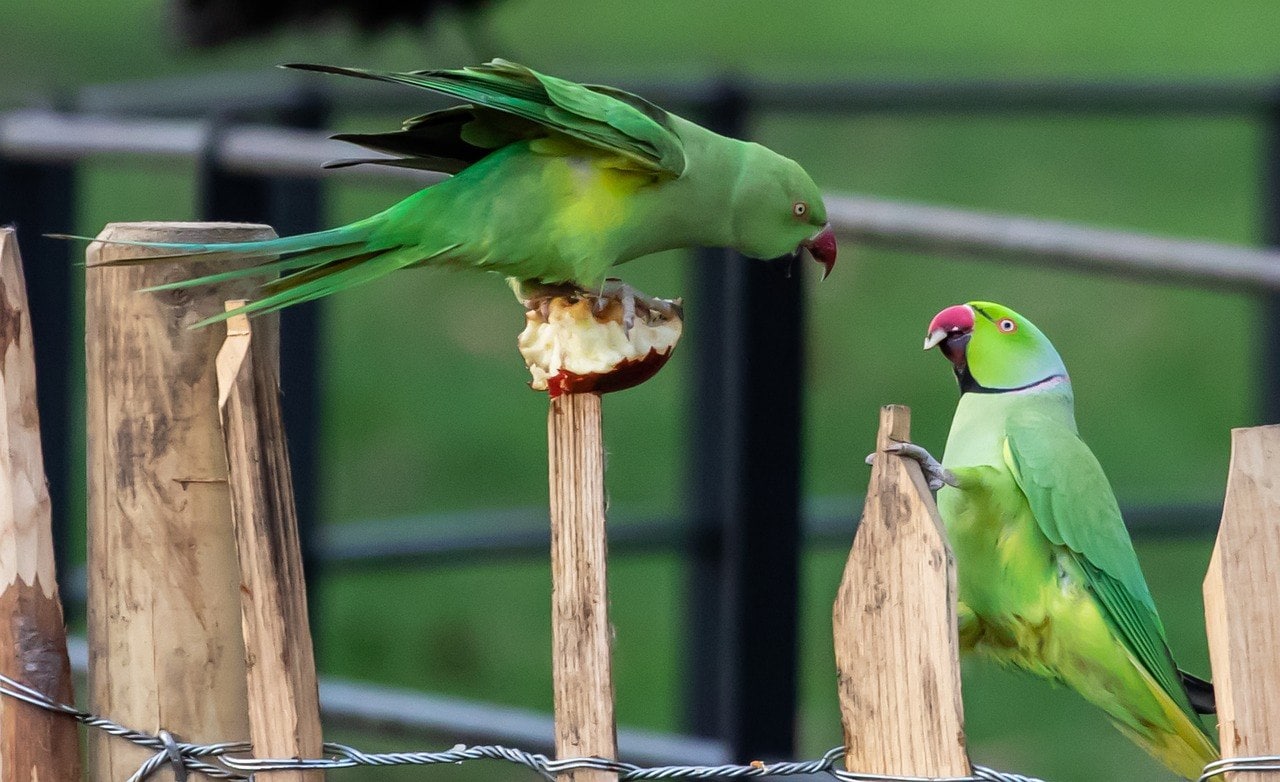
Breeder
- $400–$1,500
If your heart is set on an Indian ringneck, you may need to buy your bird from a breeder. This is more of an investment than an adoption. Although the upfront costs are usually much higher, most people consider this the best way to get a healthy Indian Ringneck parakeet that has been socialized.
The cost of an Indian ringneck parakeet from a breeder can range anywhere from $400–$1,500, depending on the type of bird you want. Some are even more expensive than others due to their colors. For example, the blue Indian ringneck parrot’s price starts at $1,500 but goes as high as $2,000+.

Initial Setup and Supplies
- $250–$350
If you adopt a bird from an avian rescue or shelter, they’ll usually provide all the supplies necessary to keep your new friend happy and healthy. However, if you buy one from a breeder or pet store, you will need to spend money on supplies.
Here’s a breakdown of what you’ll need.
List of Indian Ringneck Parakeet Care Supplies and Costs
| Cage: | $75 |
| Toys: | $30 |
| Food: | $20 |
| Perches: | $15 |
| Lining: | $10 |
| First vet visit: | $150–$300 |
| Litter Scoop: | $10 |
| Carrier: | $40 |
| Food and Water Bowls: | $10 |

How Much Does an Indian Ringneck Parakeet Cost Per Month?
- $50–$150 per month
Next, we’ll discuss the ongoing costs. Once you bring your new pet home, it’ll be important to budget for years so they have everything they need to thrive.
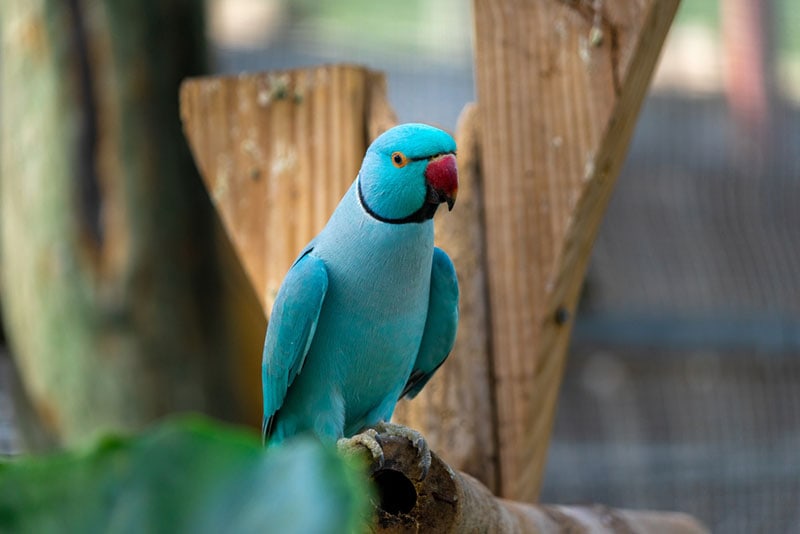
Health Care
- $0–$50 per month
Indian ringneck parakeets are susceptible to several common diseases, so it’s important to budget for their veterinary visits. In most cases, you should visit the vet once every 6 months or more frequently, depending on your bird’s health and age.
The costs can get very high if your new pal gets sick, so it’s best to be prepared.
Common illnesses
Ringneck parakeets are vulnerable to a few diseases, including:
- Coccidiosis: A gastrointestinal disease caused by parasites that will eventually kill the host unless treated with antibiotics.
- Parasites: This can be anything from worms to mites and ticks, but they all require veterinary attention. The treatments are usually inexpensive, but they add up over time.
- Depression: It’s a well-known fact that birds have the intelligence of 3-year-old children and can get depressed or even lash out if they’re not sufficiently stimulated.
Being alone is also very stressful for ringnecks, and it’s best to adopt two birds (just make sure they are both female or neutered).
Be on the lookout for any signs or changes in your parrot, and report them to your veterinarian.
Food
- $10–$30 per month
A parakeet is a small bird, so it doesn’t eat much. A full-grown adult Indian ringneck may only consume $10 of food a month. However, it’s important to talk to your vet for brand recommendations and feeding tips. They can determine how much to feed your bird based on its age, weight, and health.
If your parakeet grows too fat or thin, it may develop an illness that gets progressively worse over time. Indian ringnecks love fresh fruits and vegetables for snacks, but make sure they don’t eat the seeds inside.
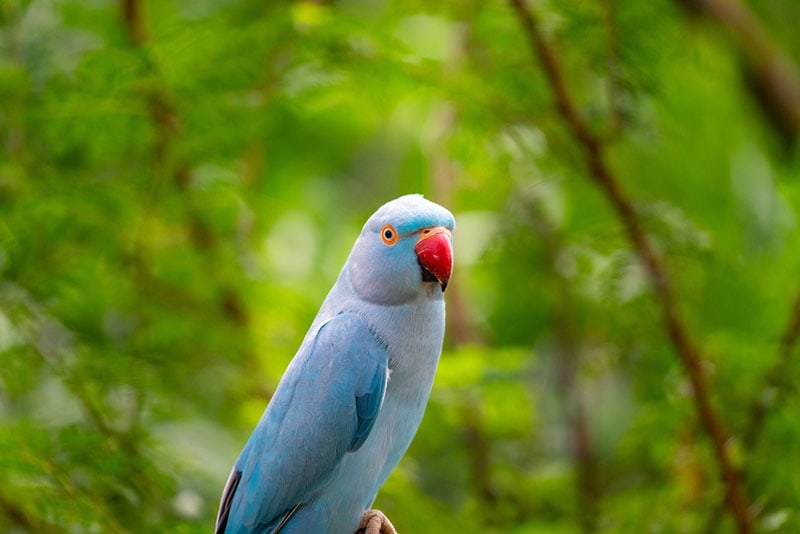
Grooming
- $0–$30 per month
Birds usually do not need to be bathed, but your new pet may benefit from a quick rinse in the sink occasionally. It helps remove loose dander, dust, and other foreign materials that can irritate their skin if left alone.
Since birds don’t have oil glands like humans or dogs, they can’t produce a natural waterproofing barrier to protect their feathers. Thus, it’s important always to keep them clean and dry. Rinse them gently under warm water using a soft cloth or sponge to eliminate stubborn dirt or stains.
You’ll also need a good pair of parakeet shears and nail clippers to clip their feathers. You can buy these items at most pet stores or online. You should also brush your parakeet’s beak and nails regularly to prevent debris from entering their digestive tract and causing blockages.
Medications and Vet Visits
- $15–$40 per monthh
Indian ringneck parakeets are naturally a very healthy breed, but you must visit your veterinarian every 6 months for routine checkups.
If your bird gets sick, you’ll need to purchase medicine and follow the vet’s instructions on properly administering it. If you ensure that you always feed them healthy food, provide clean water, and maintain their living quarters properly, they’re less likely to get sick.
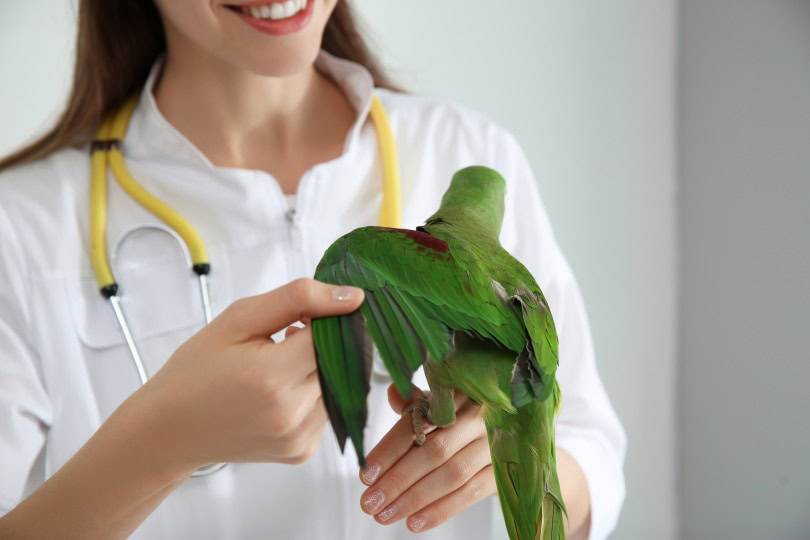
Pet Insurance
- $7–$40 per month
As you can see, vet costs can add up quickly, which is why it might be a good idea to invest in pet insurance before the need arises. You’ll pay a small fee every month to ensure that your pet is well-covered if it gets sick or injured and has high medical expenses. The rates usually include checkups, prescriptions, lab tests, hospitalization fees, X-rays & surgery costs, etc.
Best of all, pet insurance is usually cheaper than paying out of pocket for the same care. The insurance company can also provide you with a health profile of your new pet and how long they’re expected to live, so you know what to expect.
You may have to wait a short period before they reimburse your money, or you may have to pay out of pocket for the expenses, but it’s still better than paying full price yourself.
Environment Maintenance
- $10–$25 per month
Your parakeet must have a hospitable place to live. It needs fresh perches, an exercise wheel, toys, and an easily accessible dish of water. To keep it mentally stimulated, buy new toys and install natural branches as perches.
You’ll also need paper as a substrate, and most pet parents use newspapers. Keep in mind that wintertime is the worst season if you live in cold areas, and you must ensure your bird’s cage is away from drafts and poorly insulated windows. They cannot tolerate the cold.
| Perches | $10/month |
| Substrate | $10/month |
| Cleaning supplies | $5/month |
Entertainment
- $5–$20 per month
Birds, especially parrots, are brilliant creatures. They need mental stimulation to prevent themselves from getting bored, and it’s best to provide several toys. Some examples are wooden boxes, see-saws, swings, etc. It will take you less than an hour every day to keep them busy and allow them to exercise. If you have multiple birds, you only need one additional toy for each bird, and they can play as a group.

Total Monthly Cost of Owning an Indian Ringneck Parakeet
- $50–$150 per month
These costs are an estimate and can vary greatly depending on your location. Pet insurance is optional and not included in this estimate. But if you choose to get it, ensure the policy includes your new pet’s breed!
Many people forget about their birds when they tire of them, but don’t do that! Parakeets are like any other animal; they need love just as much as you do. Before buying one, ensure your financial situation is stable to avoid any surprises later on.

Additional Costs to Factor In
You might want to have a rainy day fund for unexpected expenses like vet visits, toys, furniture, or kitchenware that your parakeet may destroy. When going away for extended periods, you’ll want to make sure your parakeet has a companion or is with someone responsible who can keep them safe and entertained. If a friend or family member cannot take care of your bird when you’re away, you can hire a pet sitter. It’s best to give advance notice when you’re leaving during a holiday since pet sitters have limited availability and their schedules fill up fast.

Owning an Indian Ringneck Parakeet on a Budget
Due to the high initial costs, it’s difficult to reduce your first-year expenses. However, you can save money if you borrow or purchase equipment from your friends or family.
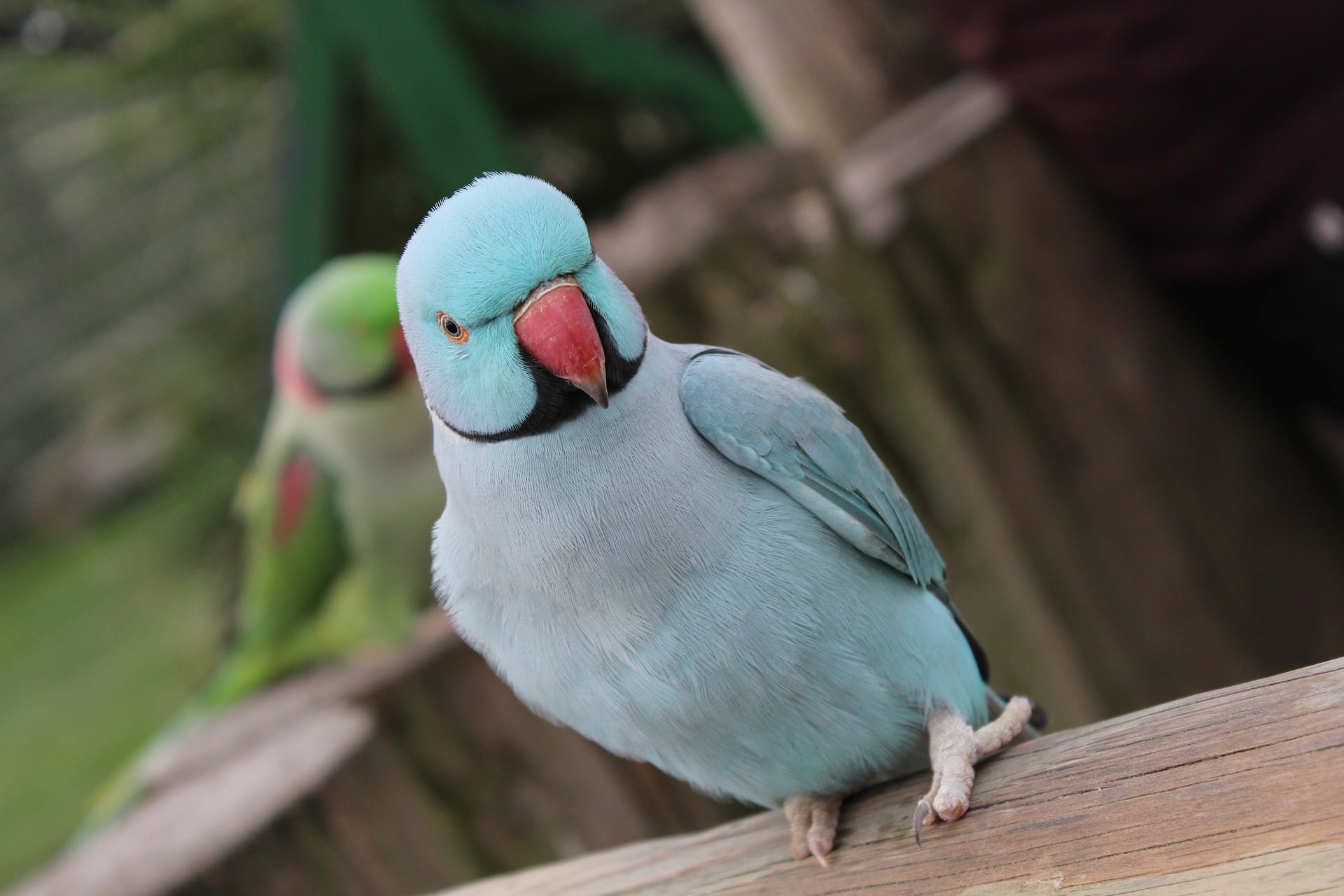
Saving Money on Indian Ringneck Parakeet Care
It’s best to buy high-quality parakeet food, but it’s inexpensive, and there are other ways to reduce your monthly expenses. Instead of buying toys, you can make them using DIY plans online. You can also use natural branches as perches instead of purchasing them.
Instead of recycling your paper products, such as newspapers, you can use them in your ringneck’s cage as a substrate.

Conclusion
If you’re looking for a new pet and are considering adopting an Indian ringneck parakeet, we hope this article has helped you get acquainted with the expenses. Ringnecks have relatively low maintenance needs that make them easy to care for, though they require daily interaction to thrive.
If you’re looking for a new pet and want something different or more exotic than the typical dog or cat, an Indian ringneck might be just what you need!
Featured Image Credit: SandeepHanda, Pixabay





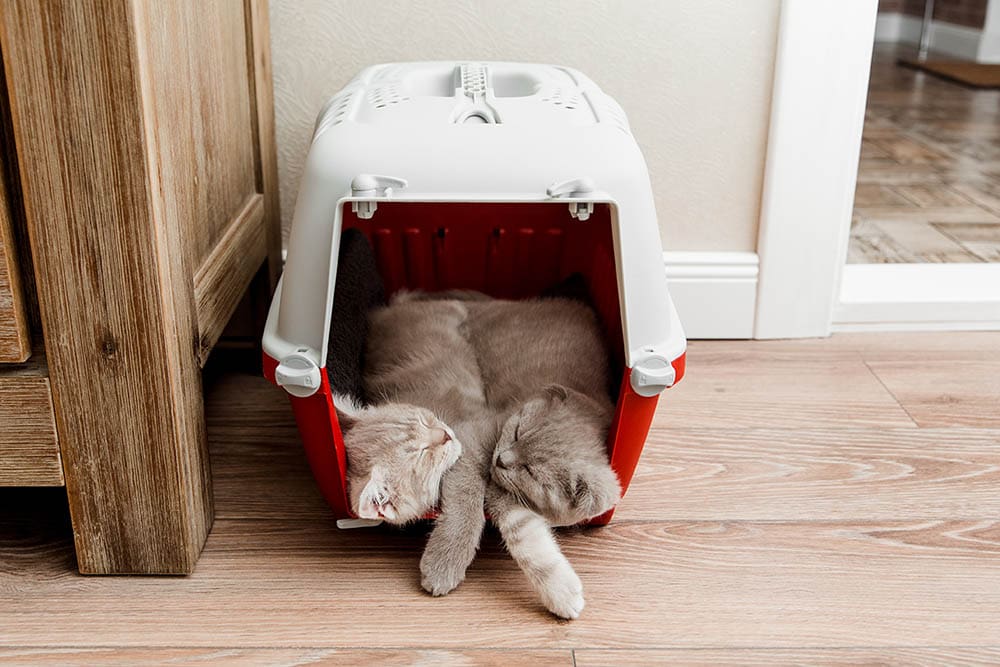




2 Responses
Great job.
Hello Costaes,
thank you very much for your lovely feedback! It is always great to hear that our articles were helpful to someone. We will do our best to keep bringing you the most helpful content to make lives of your pets better.
Best wishes!